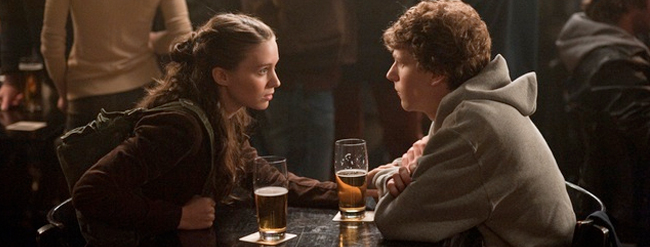
In light of wordsmith Aaron Sorkin’s Golden Globe, WGA (and impending Oscar) victories with The Social Network, many – myself included – have had cause to go back and re-watch the film, quite literally hanging on every word. Naturally, one of Sorkin’s shining moments, among several, is right out of the gate. While I may not get as hot and bothered by the now infamous 8-9 page, 99 take, Eisenberg Vs. Mara bout at the onset of The Social Network (watch here), I can’t deny the simple fact that it’s a hell of a way to hook your audience. Rather than cerebral intrigue on the shores of Limbo or tense stammering to the crowds at Wembley Stadium, The Social Network sets up shop at a table between two people. A table for two became a boxing ring in a film that defines our generation. However, richly scripted one-on-one table talk is something that this generation of film is no stranger to.
Beware: there are spoilers afoot…
Honorable Mentions: When Harry Met Sally (1989) and Crimes and Misdemeanors (1989). Unfortunately, these missed the generational cut by a year, but be sure to give them their due when you get the chance.
Note: Click the titles to watch the scenes.
10.) Fight Club (1999)
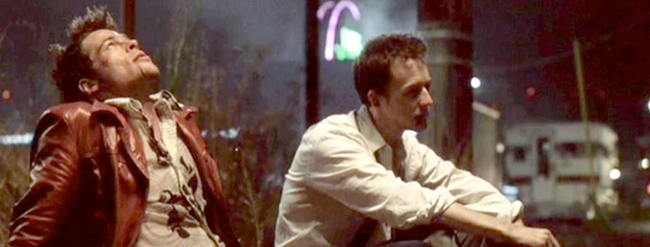
Leave it to Mr. David Fincher to give this generation not one, but two films that define its culture. By now, no doubt, Fight Club has become one of several clichéd must-see films among the millennium generation, but has certainly achieved such status for a reason. Brad Pitt and Edward Norton’s table talk before the famed “I want you to hit me as hard as you can” scene is one such reason. While it may not be immersed in tennis match dialogue like its Sorkin-scripted successor, the scene gives us our first glimpse into Tyler Durden’s thoughts on manhood and the devil of materialism.
9.) The Dark Knight (2008)
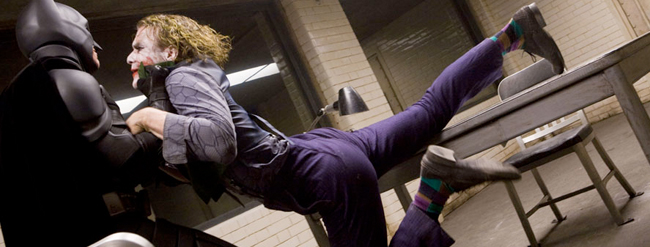
Nearly half of Hollywood in the past 20 years has been mainly defined by one thing: the comic book. While screen adaptations of the characters within bubbles and panels have been prevalent since the 1940’s, comic book films seem to have come in droves of reboots and remakes since X-Men landed in 2000. Among those, very few have been substantially good films, let alone great – save some like The Dark Knight. I’ll be the first to admit the film’s numerous flaws, but the interrogation of Heath Ledger’s Joker is one of the many moments that Christopher Nolan didn’t just get right, but perfect. The scene brings to light the meat and potatoes behind the relationship between the Caped Crusader and the Clown Prince of Crime, and develops a Yin and Yang dynamic seen in some of the best morality plays.
8.) (500) Days of Summer (2009)
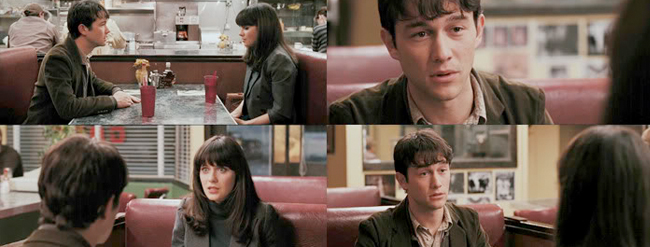
I don’t go as ga-ga over this film as some, but thanks to fellow Film Stager Kristy Puchko, I was reminded of the priceless, albeit brief, scene referencing Sid and Nancy. The comparison made is incredibly apt to me, as my main qualm with the film was Summer’s (Zooey Deschanel) presence as a big bitch, and Tom’s (Joseph Gordon-Levitt) presence as a little one. As such, love them or hate them, the scene comes to epitomize these two characters and their attitudes toward one another. Gordon-Levitt quietly simmers and pouts as Nancy, unable to man-up, while the oblivious Summer remains coldly unable to acknowledge his heartbreak. It is this dynamic that makes the film resonate with anyone who’s ever broken a heart or been broken-hearted.
7.) Saving Private Ryan (1998)
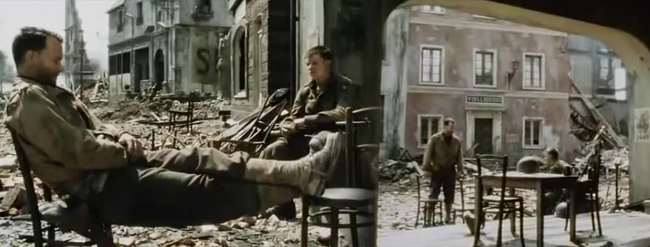
One wouldn’t expect much room for good table (sort of) conversation to sneak its way into a WWII epic, but Steven Spielberg and scribe Robert Rodat somehow managed to find a way. In what is considered to be the best war film of this – or any – generation, the film’s keynote scene comes not in the first 15 minutes on Omaha Beach (as some might have it), but outside a dilapidated French café between Tom Hanks’ Cpt. Miller and Matt Damon’s Pvt. Ryan. The two discuss the fragile nature of memory as Damon recounts the last time he was together with his late brothers. While the dialogue isn’t particularly eloquent or poetic, there’s something about Damon’s fond laughter trickling into achy realization that speaks perfectly to the importance of memory amid the maw of war.
6.) No Country For Old Men (2007)
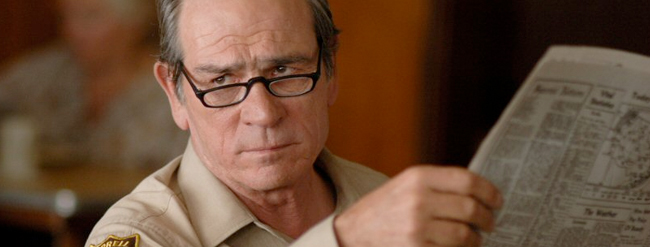
When discussing great conversations I’d be remiss if the Coens didn’t come into the mix. Point in fact; almost any film of theirs could be sitting in this spot quite satisfactorily. I’m also not entirely sure who I should be giving laurels to, Joel and Ethan Coen or Cormac McCarthy, so let me simply say that the three of them did a phenomenal job in bringing the No Country’s breakfast table conclusion to fruition. Although the conversation is a bit one-sided between Ed Tom Bell and his wife Loretta, his dream recollection is McCarthy’s writing firing on all pistons. Tommy Lee Jones’ tired Texan drawl brings the Coens’ western to a beautiful, taciturn finish, letting you contemplate everything witnessed in the previous 122 minutes.
5.) Inglourious Basterds (2009)
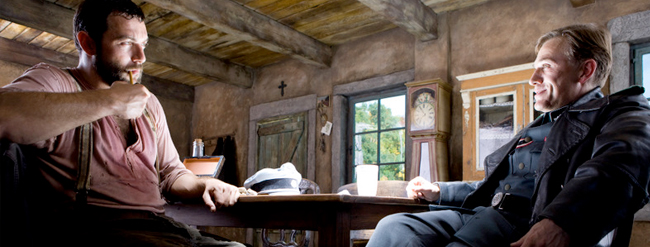
Like any of Quentin Tarantino’s films, Basterds naturally has a near limitless supply of quotable dialogue, most of which comes by way of table conversation. However, the introduction of Christoph Waltz’s Hans Landa is far and away one of the film’s many peaks, taking up one of the its five parts. Tarantino paints Waltz as undeniably charming, yet wholly despicable, in a matter of minutes as the tension builds. Here, Tarantino emulates the best as he takes heart in Hitchcock’s notion that there is no suspense in a gun that goes off.
4.) Ocean’s Eleven (2001)
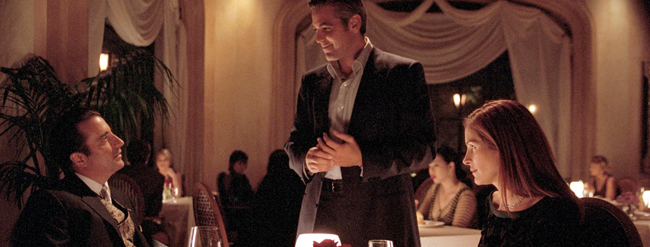
I’m as fed up with this generation remaking old Hollywood as anyone, but few can deny Steven Soderbergh’s reinvention of the lackluster Rat Pack original it’s due praise. Honestly, if this list were comprised of the 20 or even 50 best films in the last 20 years, this film – lovely though it may be – wouldn’t make the cut. Despite that, as far as table banter goes, Danny (George Clooney) and Tess’ (Julia Roberts) reunion as ex-spouses makes even the best of old Hollywood hard-pressed to keep up. The two parry with the best lines in Ted Griffin’s arsenal. His screenplay is stylishly fresh, while also maintaining a devilishly charming old Hollywood sensibility. The “gin joint” nod seals the deal, and you could swear that a bit of Bogey and Bergman shine through.
3.) Pulp Fiction (1994)
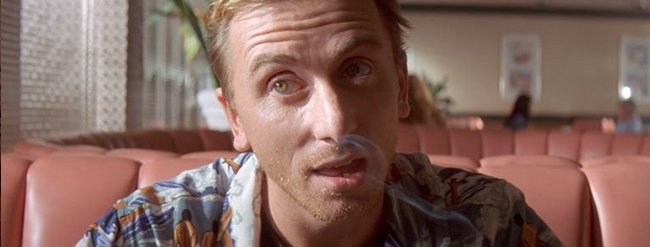
Number 3 on this comes with a bit of a bullet, as it does seem, well, fanboy-ish to put Quentin Tarantino on the list twice. However, thief or not, in terms of one-two punch dialogue, the man is a prizefighting heavyweight champion. Were it not for Casablanca (arguably one of the best screenplays ever written), you might think that the man invented great table talk, which coincidentally comprises roughly 70% of Pulp Fiction. Picking the best one is like picking a favorite child, but the answer is always obvious – the first-born. Tim Roth and Amanda Plummer grab you by the balls with their seemingly innocuous conversation, begging one to ask the question often asked of the film: “What the hell is this movie about?” What makes the scene for me is that, if you listen closely, you can hear a bit of overflow from the conversation between Samuel L. Jackson and John Travolta had at film’s end (at 3:02 in the clip), brilliantly tying together the films two best table scenes in one nifty little stroke.
2.) Y Tu Mamá También (2001)
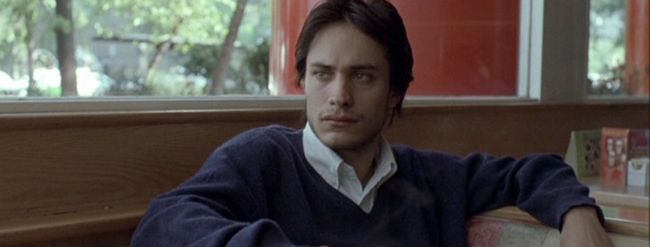
Much like No Country, the conclusion to Alfonso Cuarón’s coming-of-age misadventure is phenomenal for its tranquility. Diego Luna and Gael García Bernal exchange stilted conversation and shifting glances as they meet for the last time. By way of actual dialogue, there isn’t much going on. It’s awkward small talk that, in the context, speaks leaps and bounds about their tragic friendship. Throughout their spirited, carefree journey, they talk at length, both in jest and heartfelt sincerity. Their openness is one that best friends are liable to have as they share sexual conquests and troubling realities. Their final talk, however, is a near-perfect illustration of what happens to two friends that have pushed their friendship past its breaking point. They part ways not as brothers in bond, but as aloof strangers, bearing only vague resemblance to people who might have known each other in some other time and place.
1.) Heat (1995)

This pick was way too easy. For those who have seen the film, you already know why this scene crowns the list. I’m even willing to go so far as to say that this table chat between veteran cop (Al Pacino) and master crook (Robert DeNiro) is far better than the film it’s in (Don’t get me wrong. I adore Michael Mann’s crime opus). It’s a quietly epic meeting both in and outside the filmic context. Two actors, undoubtedly two of the all-time best, circle around each other for decades in their equally illustrious careers, only to meet for the first time in a diner of all places. Their verbal joust is one that some have tried to emulate without ever holding a candle. Pacino and DeNiro exude an aura of mutual respect rather than aggression. They speak like old friends, discussing romantic pitfalls, their adhesion to their respective professions and the unfortunate hand fate has dealt by placing them in opposing ends of the law. Their exchanges play like Shakespeare or Homer, and if either of those men stopped to write a cat-and-mouse crime movie, I’m sure the result wouldn’t be much different.
So what of it? There must be some scenes I missed. Which of these did you love? What are some of your favorite table convos in the past 20 years?
